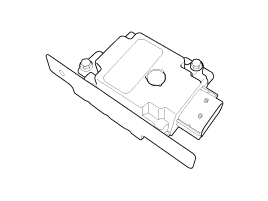Kia Cadenza YG: Fuel Delivery System / Fuel Pump Control Module (FPCM) Description and Operation
| Description |

| Operation |

| 1. |
The ECM provides target fuel pressure information to the FPCM via CAN network. |
| 2. |
The FPS provides the FPCM with actual pressure information of
the low pressure fuel line between the low and high pressure fuel
pumps, and the FPCM forwards the information to the ECM.Also, the FPCM
diagnoses faults in the FPCM, fuel pump motor and FPS and then provides
the diagnosis information to the ECM. |
| 3. |
The FPCM compares the actual fuel pressure information
measured by the FPS with the target fuel pressure information provided
by the ECM and controls the voltage that is provided to the low pressure
fuel pump motor.The FPCM keeps regulating fuel flow rate by controlling
the low pressure fuel pump, depending on engine speed (rpm) and vehicle
loads. |
Removal 1. Remove the fuel pump. (Refer to Fuel Delivery System - “Fuel Pump”) 2. Disconnect the electric pump wiring connector (A) and the fuel sender connector (B).
Specification ItemsSpecificationApplied Voltate (V)6~18Current Consumption (A)Max. 15Fuel Pressure StartMax. 600 KPa (Max. 6.1 kgf/cm², Max.
Other information:
Kia Cadenza YG 2016-2021 Service Manual: Immobilizer Control Unit Repair procedures
Removal 1. Disconnect the negative (-) battery terminal. 2. Remove the crash pad lower panel. (Refer to Body - "Crash Pad") 3. Disconnect the 5P connector of the SMARTRA unit and then remove the SMARTRA unit (A) after loosening the bolt. Installation 1.
Kia Cadenza YG 2016-2021 Service Manual: Repair procedures
Refrigerant System Service Basics Refrigerant Recovery Use only service equipment that is U.L-listed and is certified to meet the requirements of SAE J2210 to remove HFC-134a(R-134a) from the air conditioning system. – Air conditioning refrigerant or lubricant vapor can irritate your eyes, nose, or th
